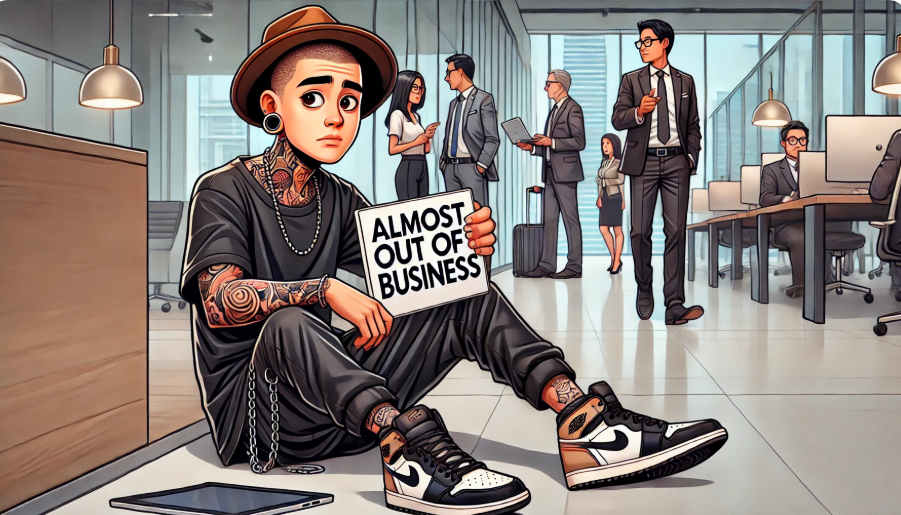Remember when working from home was normal?
Technical writers like me could juggle multiple clients from the comfort of our own spaces.
Those were the golden years.
Now?
Companies are pushing for a return to the office, and everything’s changed.
My business is bleeding money, and I’m left wondering if the glory days are truly over.
🌟 The Glory Days of Remote Work
Back in the height of the pandemic, remote work wasn’t just a trend—it was a necessity.
For technical writers, this shift opened up a world of opportunities.
We could take on clients from different regions without ever leaving home.
This flexibility meant:
✅ Increased productivity
✅ Lower overhead costs
✅ The ability to manage multiple projects at once
It was a win-win for both writers and clients.
I was handling two, three, even four clients at a time, growing my income and expanding my reach.
Everything worked seamlessly.
But that didn’t last.
📉 The Harsh Reality of Return-to-Office Mandates
Fast forward to today, and the landscape has changed drastically.
Companies are forcing workers back to the office, thinking it improves productivity.
For freelancers like me, this shift has been devastating.
Instead of handling several clients remotely, I’m now stuck working with only local businesses that demand in-office presence.
This limitation has slashed my income potential and increased my costs.
Instead of using time productively, I’m stuck commuting.
Instead of working with multiple clients, I’m trapped in one office for hours.
Instead of thriving, I feel like I’m just surviving.
🔥 Rising Competition in a Shrinking Market
To make things worse, competition has skyrocketed.
With fewer remote opportunities, more technical writers are fighting for the same local contracts.
The market is oversaturated, and it’s a race to the bottom.
Rates are dropping, and quality is being compromised.
What used to be a stable, well-paying profession now feels like a battleground.
Only the most resilient will survive.
💰 The Impact on My Business
Return-to-office mandates and increased competition have hit my business hard.
💸 Operational costs have skyrocketed with commuting and higher business expenses.
💼 Finding new clients has become next to impossible.
📉 The steady flow of projects I once had is now a trickle.
Even platforms like LinkedIn and Seek, which once brought in consistent work, are yielding nothing.
Every day, I see fewer opportunities and more rejections.
📊 Is Technical Writing Dying?
It’s hard to ignore the signs.
AI-driven documentation tools are replacing some human writers.
Companies are cutting costs, thinking they can get by with minimal documentation.
Businesses are pushing for in-person collaboration, ignoring the fact that technical writing can be done just as well remotely.
The demand for technical writers is shrinking, and securing work has never been this hard.
(Source: hiringlab.org)
(Source: staffingindustry.com)
🔄 Adapting to the New Normal
Despite the challenges, I’m finding ways to stay afloat.
Here’s what I’m doing:
📌 Exploring new niches like UX writing and content strategy to expand my services.
📌 Learning AI tools to stay competitive and improve efficiency.
📌 Networking aggressively, attending events, and building relationships to find hidden opportunities.
📌 Looking at industries outside tech, where documentation is still essential.
🛠️ What Can Other Technical Writers Do?
If you’re feeling the impact of this shift, here’s what you can do:
✅ Upskill: Learn AI tools, content strategy, or UX writing.
✅ Expand Your Services: Consider instructional design, process documentation, or policy writing.
✅ Think Beyond Tech: Healthcare, finance, and government still need solid documentation.
✅ Build a Safety Net: Have multiple income streams so you’re not relying on one client or job board.
The market is changing, but there are ways to adapt.
⚡ Final Thoughts: Is This the End of Technical Writing?
Technical writing isn’t dead, but it’s not what it used to be.
📌 Remote work is disappearing.
📌 Companies are cutting budgets.
📌 AI is replacing some documentation roles.
📌 More writers are competing for fewer jobs.
To survive, technical writers must evolve.
That means:
✅ Learning AI-enhanced tools
✅ Expanding into new areas of writing
✅ Building strong professional connections
The golden years of 2019-2023 are gone, but technical writing isn’t over.
It’s just changing, and we have to change with it.






